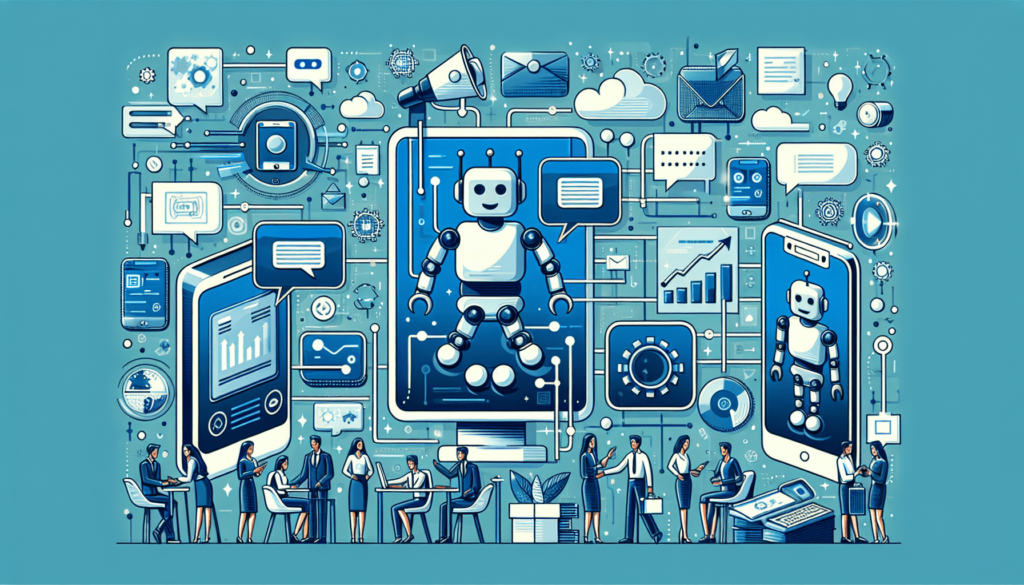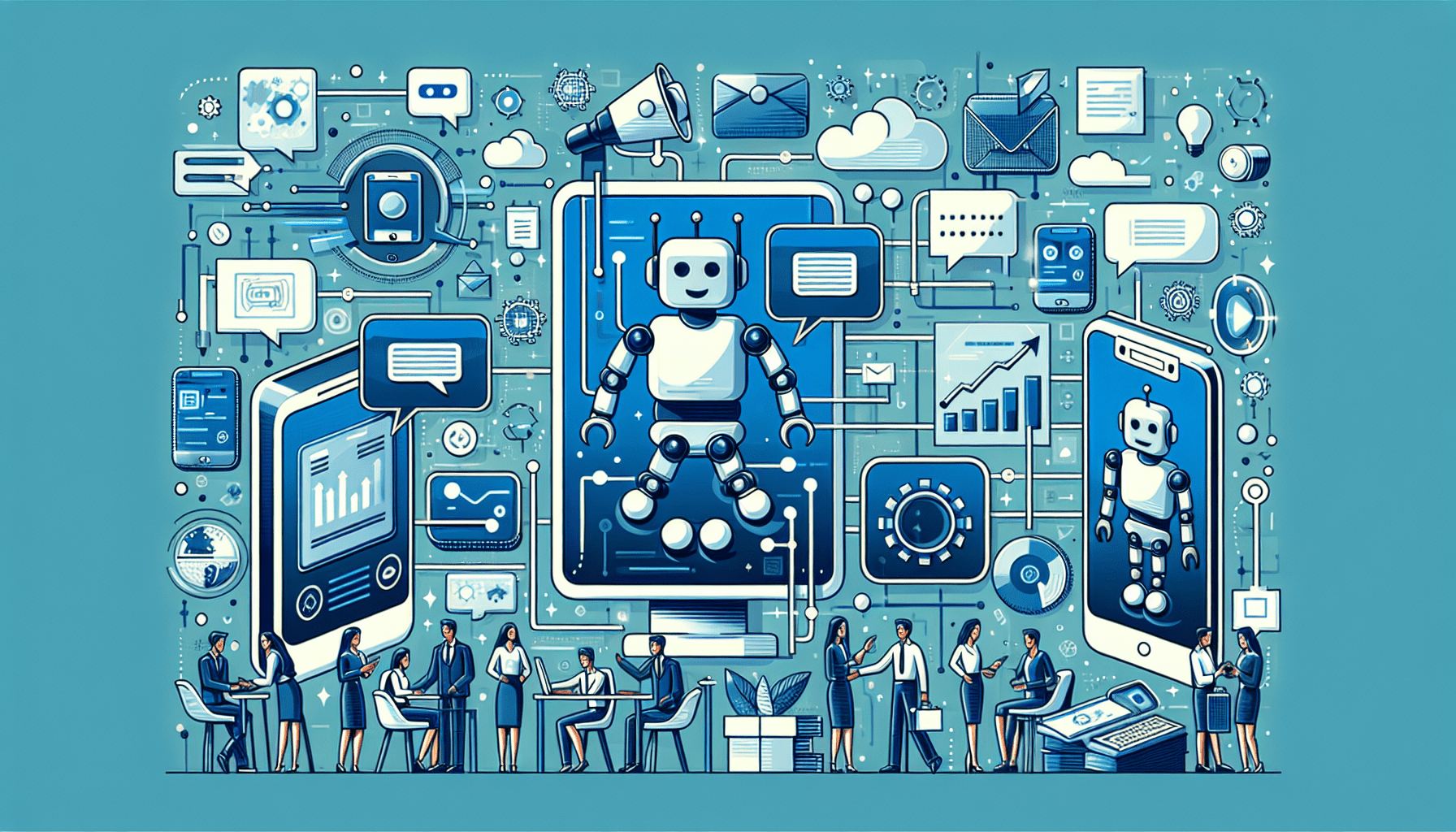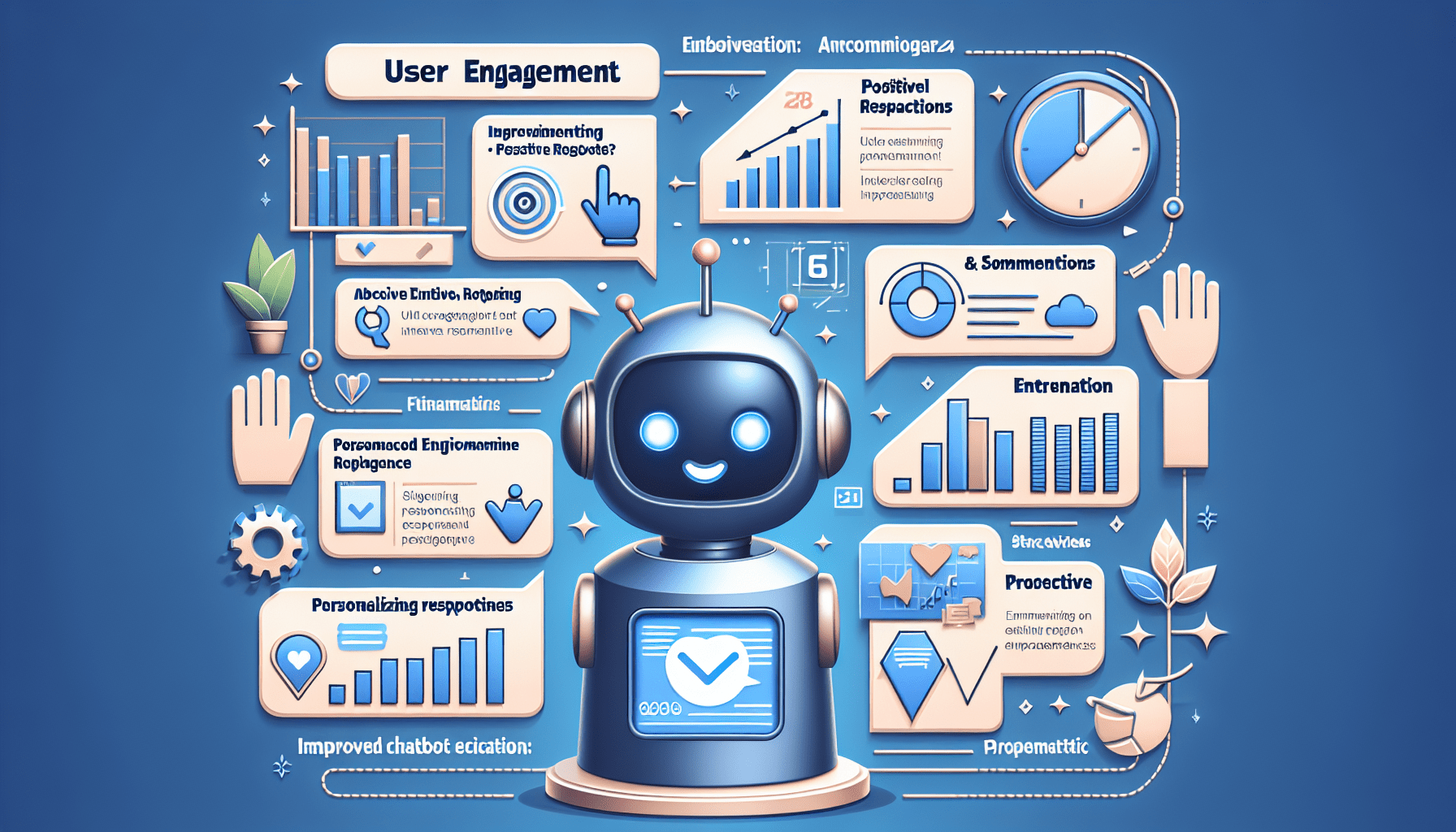Are you looking to improve your business’s customer service experience? Look no further than our comprehensive guide on chatbot integration tips. In this article, you will discover valuable insights on how to seamlessly incorporate chatbots into your website or messaging platforms, enhancing customer engagement and satisfaction. Whether you are a small startup or an established company, these tips will help you create a personalized and efficient chatbot experience for your customers. So, let’s get started and revolutionize the way you connect with your audience!
Choosing the Right Platform

Identify your requirements
When it comes to choosing the right platform for your chatbot, it’s important to start by identifying your specific requirements. Consider factors such as the size of your business, the complexity of your chatbot needs, and your budget. Determine whether you need a platform that offers advanced features like natural language processing (NLP), machine learning capabilities, or integration with voice assistants. This initial step will help narrow down your options and ensure that you select a platform that meets your unique needs.
Consider the features
Before finalizing your choice of chatbot platform, it’s crucial to carefully consider the features offered by each platform. Evaluate whether the platform provides support for multiple messaging channels, such as websites, mobile apps, and social media platforms. Look for features like customizable chatbot templates, analytics and reporting capabilities, and the ability to integrate with other systems and databases. These features will determine the flexibility and functionality of your chatbot, so choose a platform that aligns with your requirements.
Evaluate scalability
Scalability is an important factor to consider when choosing a chatbot platform. As your business grows and your chatbot usage increases, you’ll want a platform that can handle the increased demand without compromising performance. Consider whether the platform allows for easy scaling, whether it offers options for adding more chatbot instances or increasing capacity, and whether it has a proven track record of handling large volumes of chatbot interactions. By choosing a scalable platform, you can ensure that your chatbot can grow with your business.
Assess integration capabilities
Integration capabilities are crucial when it comes to chatbot implementation. Assess whether the platform allows for seamless integration with your existing systems, such as customer relationship management (CRM) software, e-commerce platforms, or customer support ticketing systems. Look for compatibility with popular programming languages and APIs, as well as the ability to establish data synchronization between your chatbot and other systems. Additionally, ensure that the platform offers secure integration options to protect your data and maintain compliance with relevant regulations.
Defining Chatbot Use Cases
Analyze customer pain points
To effectively implement a chatbot, it’s important to analyze your customers’ pain points. Identify the most common issues or questions that your customers face when interacting with your business. By understanding their pain points, you can design your chatbot to address these specific needs and provide relevant solutions. This will not only improve the customer experience but also reduce the workload on your support team by automating responses to frequently asked questions.
Identify repetitive tasks
Another key aspect of defining chatbot use cases is identifying repetitive tasks that can be automated. Determine which tasks within your business processes are time-consuming and repetitive, such as order processing or appointment scheduling. By automating these tasks through a chatbot, you can free up valuable time for your employees to focus on more complex and high-priority work. Additionally, customers will appreciate the convenience of being able to complete these tasks quickly and easily through a chatbot.
Automate customer support
One of the most popular use cases for chatbots is automating customer support. By implementing a chatbot that is capable of understanding and responding to customer queries, you can provide 24/7 support without the need for human intervention. This can significantly improve response times and reduce customer frustration. Ensure that your chatbot is equipped with the necessary knowledge base or AI capabilities to handle a wide range of customer inquiries effectively.
Enhance lead generation
Chatbots can also be utilized to enhance lead generation efforts. By engaging potential customers in conversational interactions, chatbots can gather relevant information and qualify leads based on predefined criteria. This information can then be passed on to your sales team for follow-up, allowing them to focus their efforts on qualified leads and increasing the chances of conversions. Incorporate lead generation functionalities into your chatbot’s design to make it an effective tool for driving business growth.
Streamline order processing
By implementing a chatbot, you can streamline the order processing experience for your customers. Allow customers to place orders, track shipments, or modify orders directly through the chatbot interface. Not only does this simplify the process for customers, but it also reduces the workload on your customer support and sales teams. Automating order processing through a chatbot can enhance efficiency and provide a seamless experience for your customers.
Designing Conversational Flows
Map out user journeys
When designing conversational flows for your chatbot, it’s essential to map out user journeys. Consider the different paths that users may take when interacting with your chatbot and plan out the conversation accordingly. Visualize the flow of the conversation, including potential branches and decision points. By mapping out user journeys, you can ensure that your chatbot provides a logical and intuitive experience for users, guiding them to the desired outcome efficiently.
Create a natural language experience
To provide an engaging and user-friendly experience, it’s important to design your chatbot to have a natural language experience. Make use of conversational language, avoiding technical jargon or complex phrasing. Ensure that your chatbot can understand and interpret user input accurately, allowing for variations in phrasing or language. By creating a natural language experience, you can make users feel more comfortable and increase their likelihood of successfully completing their desired tasks.
Define fallback actions
Even with careful design, there may be instances where the user’s input is unclear or falls outside the scope of your chatbot’s capabilities. In such cases, it’s essential to define fallback actions to handle these situations. Consider what the chatbot should do when faced with an ambiguous query or when it encounters an error. Provide clear instructions or suggestions to guide the user towards the desired outcome or offer alternative options. Properly defining fallback actions ensures that your chatbot can handle unexpected situations and redirect the user appropriately.
Consider multi-step interactions
Some user requests or tasks may require multiple steps or interactions to accomplish. When designing conversational flows, consider these multi-step interactions and plan accordingly. Break down complex tasks into smaller, more manageable steps and guide the user through each step of the process. Provide clear instructions and feedback at each stage to ensure that users understand the process and are able to complete it successfully. By incorporating multi-step interactions, you can handle more complex scenarios and provide a comprehensive user experience.
Implement context-based responses
To enhance the user experience and make conversations more meaningful, implement context-based responses in your chatbot. By leveraging information from previous interactions or user data, your chatbot can provide personalized and relevant responses. For example, if a user asks about the status of their order, the chatbot can refer back to previous conversations and provide an update based on the order mentioned. Implementing context-based responses adds a layer of intelligence to your chatbot and enhances the overall conversational experience.
Integrating with Existing Systems
Analyze data and APIs
When integrating your chatbot with existing systems, start by analyzing the data and APIs that need to be accessed. Determine what information your chatbot needs to retrieve or update from external systems, such as customer profiles or inventory data. Identify the APIs or data sources that provide this information and ensure that they are accessible and properly documented. By understanding the data and APIs involved, you can design the integration process more effectively and ensure the smooth flow of information between your chatbot and other systems.
Ensure compatibility and security
Compatibility and security are critical considerations when integrating your chatbot with existing systems. Ensure that the chatbot platform and the systems you are integrating with are compatible in terms of technology and communication protocols. Verify that the necessary security measures, such as encrypted communication and authentication, are in place to protect data transmission. Conduct thorough testing to ensure that the integration works seamlessly and that all sensitive data remains secure throughout the process.
Establish data synchronization
Data synchronization is vital to maintain consistency between your chatbot and other systems. Implement mechanisms to regularly synchronize data between your chatbot and the integrated systems to ensure that the information remains up to date. Identify the frequency and methods of data synchronization that are most suitable for your specific use case, whether it involves real-time synchronization or scheduled batch updates. By establishing data synchronization, you can ensure that your chatbot has access to the latest information and that users receive accurate responses.
Implement Single Sign-On (SSO)
To provide a seamless user experience and simplify authentication, consider implementing Single Sign-On (SSO) for your chatbot. With SSO, users can log in to your chatbot using their existing credentials from another system, such as their email or social media accounts. This eliminates the need for users to create new accounts or remember additional login information, enhancing convenience and reducing friction. Implementing SSO not only improves the user experience but also allows for better integration with existing user management systems.
Testing and Continuous Improvement
Perform functional testing
Before launching your chatbot, it’s crucial to perform functional testing to ensure that it operates as intended. Test all the defined conversational flows and user journeys, verifying that the chatbot responds correctly to different inputs and scenarios. Identify and resolve any potential bugs or issues that may arise during testing. By conducting thorough functional testing, you can ensure that your chatbot is ready to provide a reliable and consistent user experience.
Conduct user acceptance testing
User acceptance testing is an essential step in the chatbot development process. Involve a group of representative users to test your chatbot and provide feedback on its usability and effectiveness. Ask users to perform specific tasks or simulate common scenarios to evaluate how well the chatbot meets their needs. Collect feedback on any pain points or areas of improvement, and use this feedback to refine and enhance your chatbot’s design. User acceptance testing ensures that your chatbot is user-centric and meets the expectations of your target audience.
Collect feedback and analyze metrics
Once your chatbot is live, it’s important to collect feedback from users and analyze relevant metrics to continuously improve its performance. Implement mechanisms that allow users to provide feedback directly within the chatbot interface or through other channels. Monitor metrics such as user satisfaction, completion rates, and response time to gain insights into the effectiveness of your chatbot. Use this feedback and data to identify areas for improvement and implement iterative enhancements to optimize your chatbot’s performance.
Iterate and enhance the chatbot
Based on the feedback and metrics collected, iterate and enhance your chatbot to address any identified issues or areas for improvement. Regularly release updates or new features to ensure that your chatbot remains relevant and effective. Stay informed about the latest advancements in chatbot technology and incorporate new capabilities or integrations as they become available. By continuously iterating and enhancing your chatbot, you can provide a high-quality user experience that aligns with evolving user needs and expectations.
Ensuring User Privacy and Compliance
Secure data transmission and storage
When implementing a chatbot, it’s crucial to prioritize user privacy and ensure secure data transmission and storage. Implement secure communication protocols, such as HTTPS, to encrypt data transmitted between the chatbot and users. Store user data securely, following industry best practices and compliance requirements. Consider implementing mechanisms like tokenization or data anonymization to further enhance security. By prioritizing data privacy and security, you can build trust with your users and maintain compliance with relevant regulations.
Obtain necessary user consent
Ensure that you obtain necessary user consent before collecting and storing any personal information through your chatbot. Clearly communicate to users what data will be collected and how it will be used. Provide options for users to control their data, such as the ability to delete their information or opt out of data collection. Adhere to applicable data protection regulations, such as the General Data Protection Regulation (GDPR) or the California Consumer Privacy Act (CCPA), to ensure that you are compliant and respectful of user privacy rights.
Comply with data protection regulations
Compliance with data protection regulations is critical when implementing a chatbot. Familiarize yourself with the relevant regulations in your jurisdiction, such as GDPR, CCPA, or sector-specific regulations. Ensure that your chatbot implementation and data handling practices align with these regulations. Implement mechanisms to respond to user data requests, such as data access or deletion requests, and keep records of data processing activities as required by applicable regulations. By proactively complying with data protection regulations, you can mitigate legal risks and build trust with your users.
Optimizing Chatbot Performance
Monitor user interactions
To optimize your chatbot’s performance, it’s important to monitor user interactions and gather insights on user behavior. Utilize analytics tools and monitoring solutions to track user interactions and collect data on user preferences, satisfaction levels, and common issues faced. Analyze user journeys and identify areas where users may encounter difficulties or drop off. By monitoring user interactions, you can identify opportunities for improvement and implement changes that enhance the user experience.
Analyze chatbot analytics
In addition to monitoring user interactions, it’s essential to analyze chatbot analytics to gain insights into its performance. Examine metrics such as response time, completion rates, and user satisfaction ratings to assess the effectiveness of your chatbot. Identify patterns or trends that indicate areas for improvement, such as frequently asked questions or bottlenecks in conversational flows. Leverage the analytics data to make data-driven decisions and optimize your chatbot’s performance.
Implement natural language processing (NLP)
Natural language processing (NLP) is a crucial technology for optimizing chatbot performance. NLP allows chatbots to understand and interpret human language, enabling more sophisticated interactions. Implement NLP capabilities in your chatbot to improve its ability to accurately comprehend user inputs, handle variations in language or phrasing, and provide more relevant responses. By leveraging NLP, you can enhance the conversational experience and increase the overall efficiency of your chatbot.
Refine machine learning models
If your chatbot incorporates machine learning capabilities, it’s important to continuously refine and improve the machine learning models powering it. Regularly review and update training data to ensure that the models accurately reflect user behavior and preferences. Assess and fine-tune the models based on ongoing feedback from users and performance metrics. By refining the machine learning models, you can optimize the chatbot’s ability to understand and respond to user queries, leading to higher customer satisfaction and engagement.
Reduce response time
Response time is a crucial factor in chatbot performance. Aim to minimize response time to provide a seamless and efficient experience for users. Optimize the performance of your chatbot by streamlining its logic and reducing unnecessary delays in response generation. Utilize caching mechanisms or pre-fetch data to ensure quick access to frequently requested information. By reducing response time, you can improve user satisfaction and increase the likelihood of successful user interactions with your chatbot.
Providing Seamless User Experience
Implement personalized interactions
Personalization is key to providing a seamless user experience. Tailor your chatbot’s responses and recommendations based on user preferences and previous interactions. Leverage user data, such as purchase history or browsing behavior, to provide personalized product recommendations or targeted assistance. Implement features like user profiles or preferences that allow users to customize their chatbot experience further. By providing personalized interactions, you can create a more engaging and relevant experience for users.
Enable easy navigation and quick access
To ensure a seamless user experience, enable easy navigation and quick access to key features or information within your chatbot. Implement intuitive menus, buttons, or quick-link options to allow users to easily navigate between different sections or perform common tasks. Leverage natural language commands or voice navigation for a more conversational and user-friendly experience. By enabling easy navigation and quick access, you can enhance user satisfaction and streamline their interactions with your chatbot.
Include visual elements
While chatbots primarily rely on text-based interactions, incorporating visual elements can enhance the user experience. Consider adding visual cues, such as images or icons, to accompany text responses and make them more engaging. Utilize cards or carousels to present information in a visually appealing and easily digestible format. Visual elements can help users quickly understand and process information, making their interactions with your chatbot more efficient and enjoyable.
Integrate with voice assistants
Integrating your chatbot with voice assistants, such as Amazon Alexa or Google Assistant, can provide a seamless user experience across different platforms. Allow users to interact with your chatbot through voice commands, extending its capabilities beyond text-based interactions. Ensure compatibility with voice assistants and optimize your chatbot’s responses and functionalities for voice-based interactions. By enabling integration with voice assistants, you can cater to a broader range of users and provide a convenient and hands-free experience.
Training and Support
Invest in comprehensive training
Comprehensive training is essential to ensure that your chatbot performs effectively and meets the expectations of your users. Train your chatbot with relevant knowledge, product information, or frequently asked questions. Test and fine-tune your chatbot’s understanding and response generation capabilities during the training phase. Provide ongoing training to continuously improve the chatbot’s performance and keep it updated with the latest information. By investing in comprehensive training, you can ensure that your chatbot is equipped to provide accurate and helpful assistance to users.
Provide ongoing support and updates
After launching your chatbot, it’s important to provide ongoing support and updates to maintain its performance and address any issues that may arise. Establish channels for users to seek help or report any problems they encounter with the chatbot. Respond to user queries or issues promptly to provide a positive user experience. Regularly release updates to address bugs, introduce new features, or refine existing functionalities. By providing ongoing support and updates, you can continuously enhance the chatbot’s capabilities and ensure user satisfaction.
Address user queries and issues promptly
Promptly addressing user queries and issues is crucial for maintaining a positive user experience with your chatbot. Establish a system or team to handle user inquiries and provide timely responses. Leverage automation tools or chatbot functionalities to automate the resolution of common user issues or inquiries. Ensure that your chatbot can seamlessly escalate complex issues to the appropriate human support agents when necessary. By addressing user queries and issues promptly and efficiently, you can build trust and ensure user satisfaction with your chatbot.
Analyzing ROI
Track chatbot usage and performance
To analyze the return on investment (ROI) of your chatbot, track its usage and performance metrics. Monitor the number of interactions, user engagement, and completion rates to assess user adoption and satisfaction. Measure the efficiency of your chatbot by tracking key performance indicators such as response time or task completion time. Analyze these metrics over time to identify trends and patterns that reflect the impact of your chatbot on user experience and operational efficiency.
Measure impact on key metrics
In addition to tracking usage and performance metrics, measure the impact of your chatbot on key business metrics. For example, track the number of customer support tickets resolved by the chatbot, order conversion rates influenced by the chatbot, or cost savings achieved through automation. Assess how the chatbot has positively influenced these metrics compared to pre-chatbot implementation benchmarks. By measuring the impact on key metrics, you can determine the tangible benefits of your chatbot and evaluate its ROI.
Calculate cost savings and efficiencies
Quantify the cost savings and efficiencies achieved through chatbot implementation to determine its ROI. Compare the resources previously required to handle customer support, order processing, or other tasks now handled by the chatbot. Calculate the reduction in labor costs or the savings in time and effort resulting from automation. Consider the increased efficiency achieved by reducing response times or streamlining processes. By calculating these cost savings and efficiencies, you can determine the financial impact of your chatbot and evaluate its ROI effectively.
In conclusion, choosing the right platform, defining chatbot use cases, designing conversational flows, integrating with existing systems, testing and continuous improvement, ensuring user privacy and compliance, optimizing chatbot performance, providing a seamless user experience, training and support, and analyzing ROI are essential steps in implementing a successful chatbot. By carefully considering each aspect and following best practices, you can leverage the power of chatbots to enhance customer support, streamline processes, and drive business growth.



